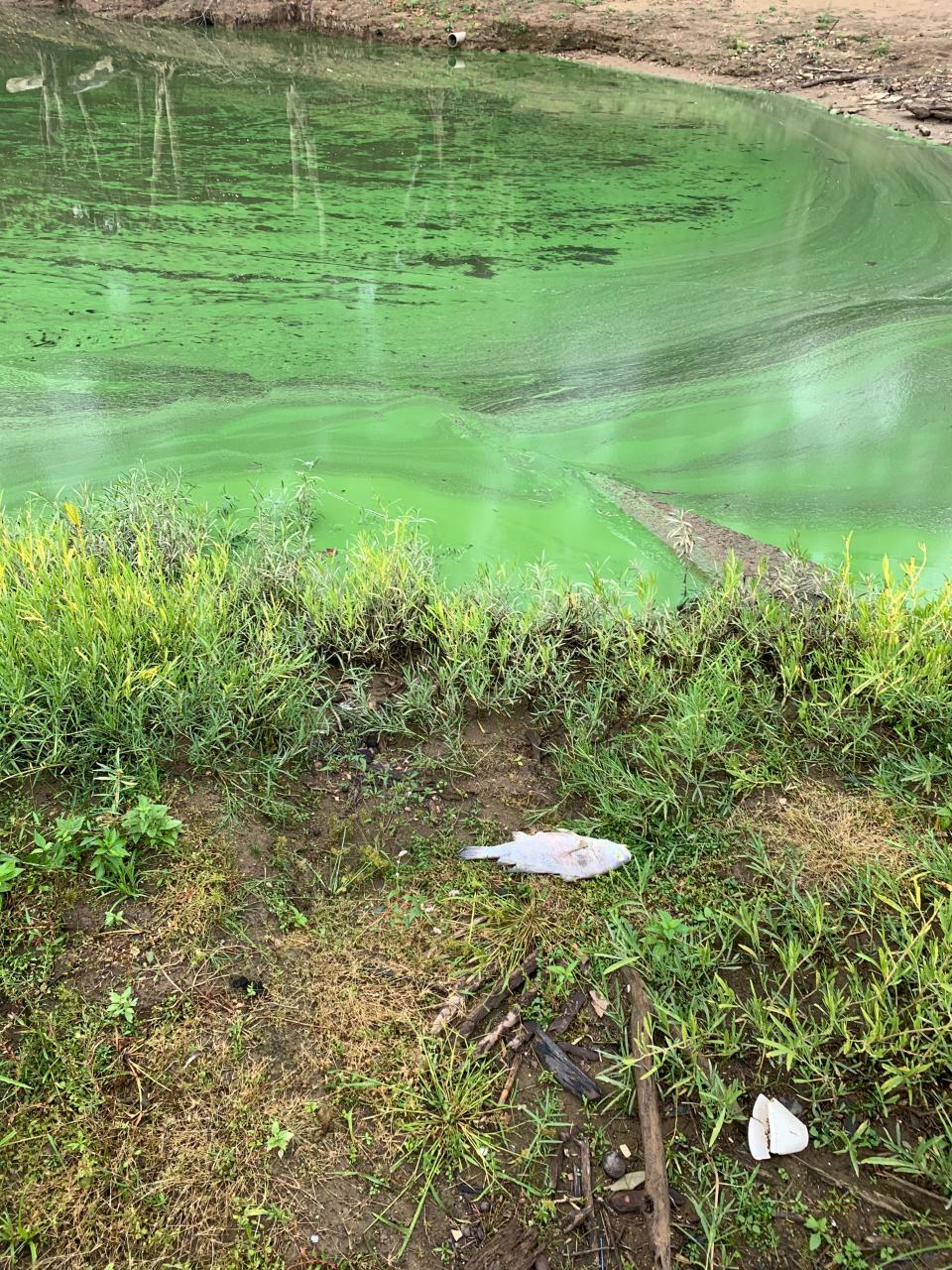Avoid certain sections of Lake Anna due to harmful algae blooms
Certain branches of Lake Anna are under a swimming advisory due to harmful algae bloom.
The North Anna and Upper Pamunkey Branches, including Terry’s Run, of Lake Anna in Orange, Louisa and Spotsylvania counties are experiencing a harmful algae bloom, a release said.
The public has been told to avoid contact with the lake in these areas until algae concentrations return to acceptable level, a release from the Virginia Department of Health said. Samples results, which were taken earlier this month, showed six locations in the North Anna and Pamunkey Branches affected by the algae. Swimming advisories are issued due to unsafe levels of cyanobacteria, which have the potential to produce toxins, the release said.
People and pets should avoid swimming, windsurfing and stand-up-paddle-boarding and other activities with a risk of ingesting water. Activities, like boating, may continue with proper precaution in advisory areas, the VDH said.
More monitoring is planned the first week of August.
The toxic algae, which is called cyanobacteria, can cause skin rash and gastrointestinal illnesses, like upset stomach, nausea, vomiting and diarrhea, the release said.
Here are the sections of the lake currently under advisory:
Pamunkey Branch — Upper (including Terry’s Run) and Middle
Upper — From the upper inundated waters of the Pamunkey to the confluence with Terry’s Run
Terrys Run — From the upper inundated waters of Terry’s Run to the confluence with the Pamunkey Branch
Middle — From the confluence of Terry’s Run with Pamunkey Branch to Rt. 612 (Stubbs Bridge)
North Anna Branch — Upper and Middle
Upper — From the upper inundated waters to the Va. 522 Bridge.
Middle — From the Va. 522 Bridge, to include Va. 719 (Holladay Bridge), to Lumsden Flats at Rose Valley Drive

Year after year, portions of the lake have been closed due to this harmful algae. Last year, the North Fork of the Shenandoah River was affected by this algae, as well as large portions of Lake Anna.
Within the past decade, outbreaks have been reported in every state, a trend likely to accelerate as climate change boosts water temperatures, an Associated Press story said in 2018.
Warm water conditions and nutrients combine to make favorable conditions for algae bloom. While most algae species are harmless, waters that are discolored or have scums that are green or blueish-green should be avoided because there is a higher potential they contain toxins.
The areas to avoid can be seen on an interactive map at SwimHealthyVA.com. Advisory signs will be posted in areas of the lake.
According to the VDH, to prevent illness, people should:
Avoid contact with any area of the lake where water is green or an advisory sign is posted, "When in doubt, stay out!"
Do not allow children or pets to drink from natural bodies of water.
Keep children and pets out of the areas experiencing a harmful algae bloom and quickly wash them off with plenty of fresh, clean water after coming into contact with algae scum or bloom water.
If you or your animals experience symptoms after swimming in or near an algal bloom, seek medical/veterinarian care.
To ensure fish fillets are safe to eat, properly clean fish by removing skin and discarding all internal organs, and cooking fish to the proper temperature.
If you suspect you experienced health-related effects following exposure to a bloom, contact the Virginia Harmful Algal Bloom Hotline at 1-888-238-6154.
The VDH and the Virginia Harmful Algal Bloom Task Force, which includes the Virginia Department of Health, Virginia Department of Environmental Quality, and the Old Dominion Phytoplankton lab, will continue to monitor water quality in the lake, the release said.
Advisories are generally lifted after two consecutive test results with acceptable levels for algal cell counts and/or toxin concentration, the release said.
More:Top 5 things to do before summer ends
More:Goose poop mess: What the nasty bird feces problem means for Staunton parkgoers
More:Augusta County Board of Supervisors voted to limit public comment. Here's what we know.
Laura Peters is the trending topics reporter at The News Leader. Have a news tip on local trends or businesses? Or a good feature? You can reach reporter Laura Peters (she/her) at lpeters@newsleader.com. Follow her @peterslaura. Subscribe to The News Leader at newsleader.com.
This article originally appeared on Staunton News Leader: Lake Anna: Harmful algae blooms restrict some sections
